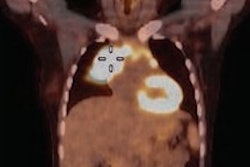Dear Molecular Imaging Insider,
As long as PET/CT has been around, researchers always seem to find new ways to reinvent the hybrid modality and its utility. By partnering FDG-PET/CT with a widely used five-point scoring system, U.K. researchers have shown it is possible to appropriately treat and predict outcomes for patients with locally advanced cervical carcinoma.
The combination helps determine the chances for survival and also helps clinicians deal with patients who are naturally quite concerned about their condition and future. Read more about their findings.
FDG-PET/CT also can play a valuable role in directing image-guided biopsies of pediatric cancer patients, according to a group of researchers from Saudi Arabia and Canada. Their study findings suggest FDG-PET/CT would be useful in identifying the best site for biopsy in young patients.
Meanwhile, a total-body PET scanner being developed by the multi-institutional EXPLORER consortium is showing considerable promise. It can provide superior image quality at low radiation dose and offers 30 to 40 times better sensitivity than current scanners, the developers say. Find out more here.
From this month's ECR 2017 in Vienna, AuntMinnieEurope.com offers multiple reports with a connection to molecular imaging.
Among them is advice on how to avoid turf battles across specialties. Also, we have an interview with the incoming European Society of Radiology (ESR) president, Dr. Bernd Hamm from Berlin, about his ideas for next year's congress. The roles of president for the ESR and ECR again have been combined for 2018, so Hamm will assume both jobs for the next year.
Radiology departments have a moral, professional, and legal responsibility to protect the safety of patients receiving imaging studies with ionizing radiation. It takes teamwork, however, to meet that critical mandate, according to a talk at ECR 2017.
Be sure to visit the Molecular Imaging Community on a daily basis to stay informed on the latest news and research from around the continent and the world.




















